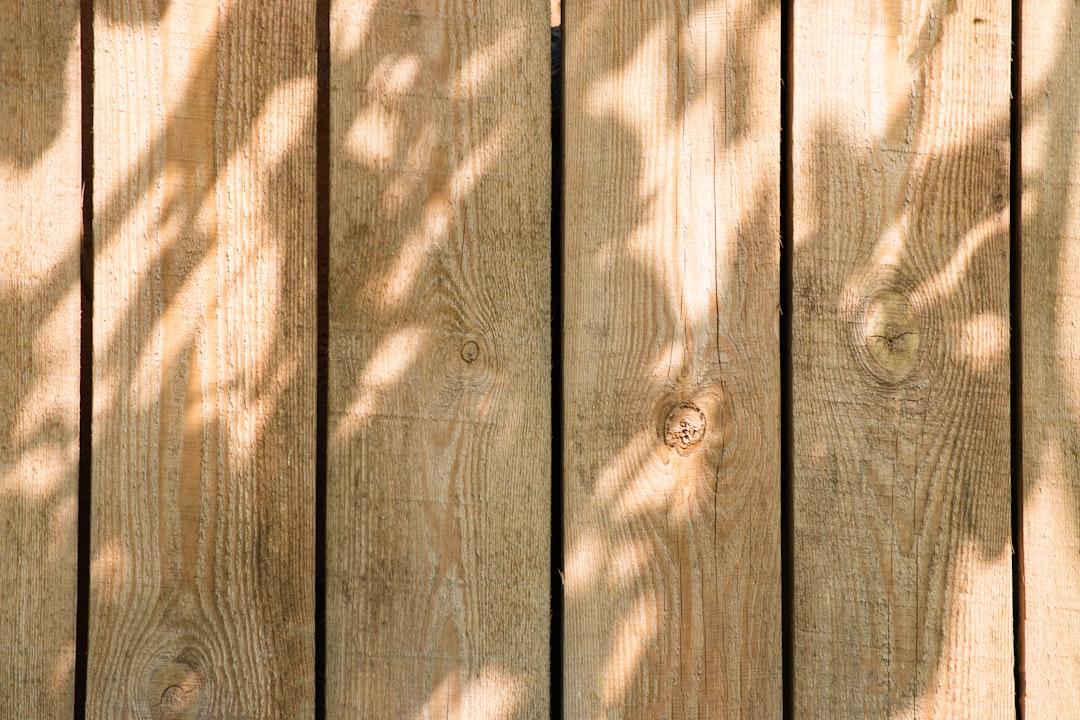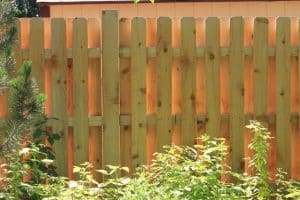When it comes to home improvement projects, budgeting is a crucial step in ensuring that you get the results you want without breaking the bank. This is especially true when it comes to installing a new fence on your property. Budgeting for a new fence is important because it allows you to plan and allocate your resources effectively, ensuring that you can afford the materials and labor required for the project.
In addition to budgeting, it is also important to understand the benefits of having a fence. A fence can provide privacy, security, and aesthetic appeal to your property. It can also define boundaries and keep children and pets safe. By understanding the importance of budgeting and the benefits of having a fence, you can make an informed decision about whether or not to invest in this home improvement project.
Contents
- 1 Factors that Affect the Cost of Fencing: Exploring Your Options
- 2 Choosing the Right Type of Fence: Comparing the Costs and Benefits
- 3 Setting a Realistic Budget: Calculating the Costs of Materials and Labor
- 4 Choosing the Right Contractor: Working with Logan Utah Fence Company
- 5 Negotiating the Price: Tips for Getting the Best Deal on Your Fence
- 6 Financing Your Fence: Exploring Your Options for Payment and Loans
- 7 Maintaining Your Fence: Tips for Reducing the Long-Term Costs of Ownership
- 8 Upgrading Your Fence: Adding Value and Functionality to Your Property
- 9 Making the Most of Your Investment in a New Fence
Key Takeaways
- Budgeting is important when installing a new fence.
- Factors that affect the cost of fencing include materials, labor, and design.
- Choosing the right type of fence involves comparing costs and benefits.
- Setting a realistic budget requires calculating the costs of materials and labor.
- Working with a reputable contractor and negotiating the price can help you get the best deal on your fence.
Factors that Affect the Cost of Fencing: Exploring Your Options
Several factors can affect the cost of fencing. It is important to explore your options and consider these factors before making a decision. The materials used for fencing, the size and height of the fence, the location and terrain of your property, and any additional features or accessories you want to include will all impact the overall cost.
The materials used for fencing can vary greatly in price. Wood fences are often more affordable than vinyl or aluminum fences, but they may require more maintenance over time. The size and height of the fence will also affect the cost, as larger fences require more materials and labor. The location and terrain of your property can impact the cost as well, as uneven or rocky terrain may require additional work to install the fence properly. Finally, any additional features or accessories you want to include, such as gates or decorative elements, will add to the overall cost.
Choosing the Right Type of Fence: Comparing the Costs and Benefits
There are several different types of fences to choose from, each with its own costs and benefits. Wood, vinyl, aluminum, and chain-link fences are some of the most common options. It is important to compare the pros and cons of each type of fence before making a decision.
Wood fences are a popular choice because they are affordable and can be customized to fit any style or design. However, they require regular maintenance to prevent rotting or warping. Vinyl fences are more expensive upfront but require less maintenance over time. They are also available in a variety of styles and colors. Aluminum fences are durable and low-maintenance, but they can be more expensive than other options. Chain-link fences are the most affordable option but offer less privacy and security.
When comparing the costs of different types of fences, it is important to consider not only the upfront cost but also the long-term maintenance and repair costs. While a wood fence may be cheaper initially, the cost of staining or painting and replacing boards over time can add up. On the other hand, a vinyl or aluminum fence may have a higher upfront cost but require less maintenance in the long run.
Setting a Realistic Budget: Calculating the Costs of Materials and Labor
Once you have chosen the type of fence you want, it is important to set a realistic budget for your project. This involves calculating the costs of materials and labor.
To estimate the cost of materials, you will need to measure the length and height of your fence and determine how many posts, panels, and accessories you will need. You can then research prices for these materials at local home improvement stores or online.
Calculating the cost of labor can be more challenging, as it will depend on factors such as the complexity of the installation, the size of your property, and any additional features or accessories you want to include. It is recommended to get quotes from multiple contractors to get an idea of the average cost in your area.
Once you have estimated the costs of materials and labor, you can set a realistic budget for your fence project. It is important to leave some room for unexpected expenses or changes to the project scope.
Choosing the Right Contractor: Working with Logan Utah Fence Company
Choosing the right contractor is crucial to the success of your fence project. A reputable and experienced contractor will ensure that the installation is done correctly and efficiently, saving you time and money in the long run.
When choosing a fence contractor, it is important to look for certain qualities. First, make sure they are licensed and insured. This will protect you in case of any accidents or damages during the installation process. Second, ask for references or look for online reviews to get an idea of their past work and customer satisfaction. Finally, consider their experience and expertise in installing the type of fence you have chosen.
Working with Logan Utah Fence Company can provide several benefits. They have years of experience in the industry and a team of skilled professionals who can handle any type of fence installation. They also offer competitive pricing and excellent customer service, ensuring that you get the best value for your money.
Negotiating the Price: Tips for Getting the Best Deal on Your Fence
Once you have chosen a contractor, it is important to negotiate the price to get the best deal on your fence. Here are some tips for successful negotiation:
1. Do your research: Research the average cost of materials and labor in your area so that you have a baseline for negotiation.
2. Get multiple quotes: Get quotes from multiple contractors to compare prices and leverage them against each other during negotiations.
3. Be flexible: If the initial quote is higher than your budget, be open to discussing alternative options or materials that may be more affordable.
4. Bundle services: If you have other home improvement projects in mind, consider bundling them with your fence installation to negotiate a better overall price.
5. Ask for discounts: Some contractors may offer discounts for certain circumstances, such as military or senior discounts. Don’t be afraid to ask if any discounts are available.
6. Be prepared to walk away: If the contractor is not willing to negotiate or meet your budget, be prepared to walk away and find another contractor who can.
Financing Your Fence: Exploring Your Options for Payment and Loans
If you are unable to pay for your fence upfront, there are several financing options available to help you cover the cost. Here are some options to consider:
1. Credit cards: If you have a credit card with a high enough limit, you can use it to pay for your fence and then pay off the balance over time. However, be aware of high interest rates and fees.
2. Personal loans: You can apply for a personal loan from a bank or credit union to cover the cost of your fence. Personal loans typically have lower interest rates than credit cards.
3. Home equity loans or lines of credit: If you have equity in your home, you can use it as collateral to secure a loan or line of credit for your fence project. These types of loans often have lower interest rates and longer repayment terms.
4. Financing through the contractor: Some fence contractors offer financing options to their customers. This can be a convenient option, but be sure to read the terms and conditions carefully before agreeing to any financing agreement.
It is important to carefully consider the pros and cons of each financing option and choose the one that best fits your financial situation and goals.
Maintaining Your Fence: Tips for Reducing the Long-Term Costs of Ownership
Once your fence is installed, it is important to properly maintain it to reduce long-term costs of ownership. Regular maintenance can help prevent damage and extend the life of your fence. Here are some tips for maintaining your fence:
1. Clean regularly: Clean your fence regularly to remove dirt, debris, and mildew. Use a mild detergent and a soft brush or sponge to avoid scratching or damaging the surface.
2. Inspect for damage: Regularly inspect your fence for any signs of damage, such as loose boards or rusted hardware. Repair or replace any damaged components as soon as possible to prevent further damage.
3. Stain or paint: If you have a wood fence, consider staining or painting it every few years to protect it from the elements and prevent rotting or warping.
4. Trim vegetation: Trim any vegetation that is growing near or against your fence to prevent damage from roots or branches.
5. Protect from moisture: If you live in a humid or rainy climate, consider applying a waterproof sealant to your fence to protect it from moisture damage.
By following these maintenance tips, you can reduce the long-term costs of ownership and ensure that your fence remains in good condition for years to come.
Upgrading Your Fence: Adding Value and Functionality to Your Property
If you want to add value and functionality to your property, consider upgrading your fence. There are several options available that can enhance the appearance and functionality of your fence. Here are some ideas:
1. Add a gate: Installing a gate can provide easy access to your property and increase security. There are several types of gates available, including swing gates, sliding gates, and automatic gates.
2. Install decorative elements: Adding decorative elements such as finials, post caps, or lattice panels can enhance the appearance of your fence and make it stand out.
3. Add privacy features: If privacy is a concern, consider adding privacy features such as privacy slats or a trellis with climbing plants.
4. Install lighting: Installing lighting along your fence can improve visibility and security at night. There are several options available, including solar-powered lights and low-voltage lighting systems.
5. Consider alternative materials: If you want a more unique or modern look, consider alternative materials such as composite or metal panels.
When considering fence upgrades, it is important to compare the costs and benefits of each option. Some upgrades may be more expensive but offer greater value and functionality in the long run.
Making the Most of Your Investment in a New Fence
In conclusion, budgeting for a new fence is important to ensure that you can afford the materials and labor required for the project. By understanding the benefits of having a fence and exploring your options, you can make an informed decision about the type of fence that best fits your needs and budget. Setting a realistic budget, choosing the right contractor, negotiating the price, and exploring financing options can help you get the best deal on your fence. Properly maintaining your fence and considering upgrades can also help reduce long-term costs of ownership and add value and functionality to your property. By following these tips, you can make the most of your investment in a new fence.
If you’re considering installing a new fence, it’s important to budget not just for the cost of the fence itself, but also for any additional features you may want to include. One such feature is a mow strip, which can help make lawn maintenance easier and more efficient. In a related article, Logan Fence Co. explores whether it’s worth paying for a fence mow strip and discusses the benefits it can bring to your yard. To learn more about this topic, check out their article here.




